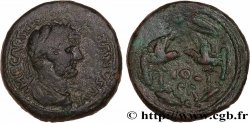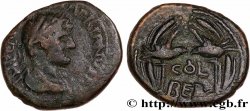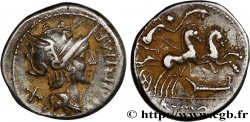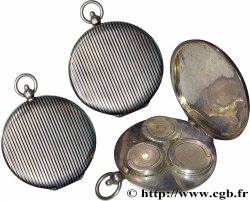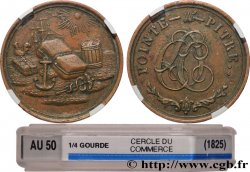Live auction - fme_711941 - HADRIANUS Sesterce (Padouan)
Sie müssen angeschlossen sein und von cgb.fr genehmigt werden, um in einer E-Auktion teilzunehmen.Melden Sie sich an, um zu wetten..Die Kontobestätigungen sind innerhalb von 48 Stunden nach Ihrer Anmeldung gemacht.Warten Sie nicht bis die letzten zwei Tage vor dem Abschluss eines Verkaufs, um Ihre Registrierung abzuschließen. Klickend "BIETEN" verpflichten Sie sich vertraglich, diesen Artikel zu kaufen und Sie nehmen ohne Reserve die allgemeinen Verkaufsbedingungen für den live auctions zu cgb.fr an.
Der Verkauf wird an der Zeit auf der Übersichtsseite angezeigt geschlossen werden. Angebote, die nach der Schließung Zeit empfangen sind, werden nicht gültig.
Bitte beachten Sie, dass die Fristen für die Einreichung Ihres Angebots auf unsere Server können variieren und es kann zur Ablehnung Ihres Angebots entstehen, wenn es in den letzten Sekunden des Verkaufs gesendet wird. Die Angebote sollen mit ganzer Zahl ausgeführt sein, Sie können Kommas oder des Punktes in Ihrem Angebot nicht erfassen. Bei Fragen klicken Sie hier, um einen Blick auf die FAQ Live-Auktionen.
Alle Gewinngebote unterliegen einem Aufschlag von 18 % für Verkaufskosten.
Alle Gewinngebote unterliegen einem Aufschlag von 18 % für Verkaufskosten.
| Schätzung : | 1 000 € |
| Preis : | Kein Gebot |
| Höchstgebot : | Kein Gebot |
| Verkaufsende : | 08 März 2022 18:47:24 |
Type : Sesterce (Padouan)
Datum: 132-134
Name der Münzstätte / Stadt : Roma
Metall : Bronze
Durchmesser : 34,5 mm
Stempelstellung : 6 h.
Gewicht : 28,81 g.
Rand lisse
Seltenheitsgrad : R1
Kommentare zum Erhaltungszustand:
Patine marron avec de l’usure sur les reliefs. Présence de quelques coups et rayures, notamment à l’avers. Bel aspect
Vorderseite
Titulatur der Vorderseite HADRIANVS - AVGVSTVS.
Beschreibung Vorderseite Buste drapé et cuirassé, tête nue d’Hadrien à droite, vu de trois quarts en arrière (A*2).
Übersetzung der Vorderseite “Hadrianus Augustus”, (Hadrien auguste).
Rückseite
Titulatur der Rückseite FELI-CITATI// A-VG // COS III P P/ S C.
Beschreibung Rückseite Galère voguant à droite avec une partie de la légende sur la voile.
Übersetzung der Rückseite “Felicitati augusti/ Senatus Consul tertium Pater Patriæ”, (À la Félicité de l’auguste/ consul pour la troisième fois père de la patrie avec l’accord du Sénat).
Kommentare
Pour le revers, il existe un nombre très important de variétés de combinaisons entre le mat, les rames, le gouvernail, et les enseignes. “Il existe un coin de Padouan, dont voici les particularités qui le distinguent de toutes les médailles authentiques que j’ai vues, sans cependant que je veuille dire que ce faussaire l’ait inventé : 1° le buste est nu à droite, drapé et cuirassé ; 2° les rameurs sont au nombre de dix sur le premier rang et de huit sur le second ; 3° Neptune y tient un sceptre.” H. Cohen, Paris, 1882, vol. II, p. 167. Nous sommes donc en présence de la copie, voir d’une invention de monnaie romaine, coulé à la Renaissance au XVIe siècle et ensuite surmoulé pendant trois siècles, appelés Padouan, du nom de la ville de Padoue dont était originaire au départ les faussaires fabriquant ce type de pièce, le plus connu d’entre eux, s’appelant Cavino.
For the reverse, there are a very large number of varieties of combinations between the mast, the oars, the rudder, and the ensigns. “There is a Paduan coin, the particularities of which are as follows which distinguish it from all the authentic medals that I have seen, without however wanting to say that this forger invented it: 1° the bust is naked on the right, draped and cuirassed; 2° the rowers are ten in number on the first row and eight on the second; 3° Neptune holds a scepter.” H. Cohen, Paris, 1882, vol. II, p. 167. We are therefore in the presence of a copy, or even an invention of Roman coin, cast during the Renaissance in the 16th century and then over-molded for three centuries, called Padouan, from the name of the city of Padua where the counterfeiters manufacturing this type of coin originally came from, the best known of them being called Cavino.
For the reverse, there are a very large number of varieties of combinations between the mast, the oars, the rudder, and the ensigns. “There is a Paduan coin, the particularities of which are as follows which distinguish it from all the authentic medals that I have seen, without however wanting to say that this forger invented it: 1° the bust is naked on the right, draped and cuirassed; 2° the rowers are ten in number on the first row and eight on the second; 3° Neptune holds a scepter.” H. Cohen, Paris, 1882, vol. II, p. 167. We are therefore in the presence of a copy, or even an invention of Roman coin, cast during the Renaissance in the 16th century and then over-molded for three centuries, called Padouan, from the name of the city of Padua where the counterfeiters manufacturing this type of coin originally came from, the best known of them being called Cavino.







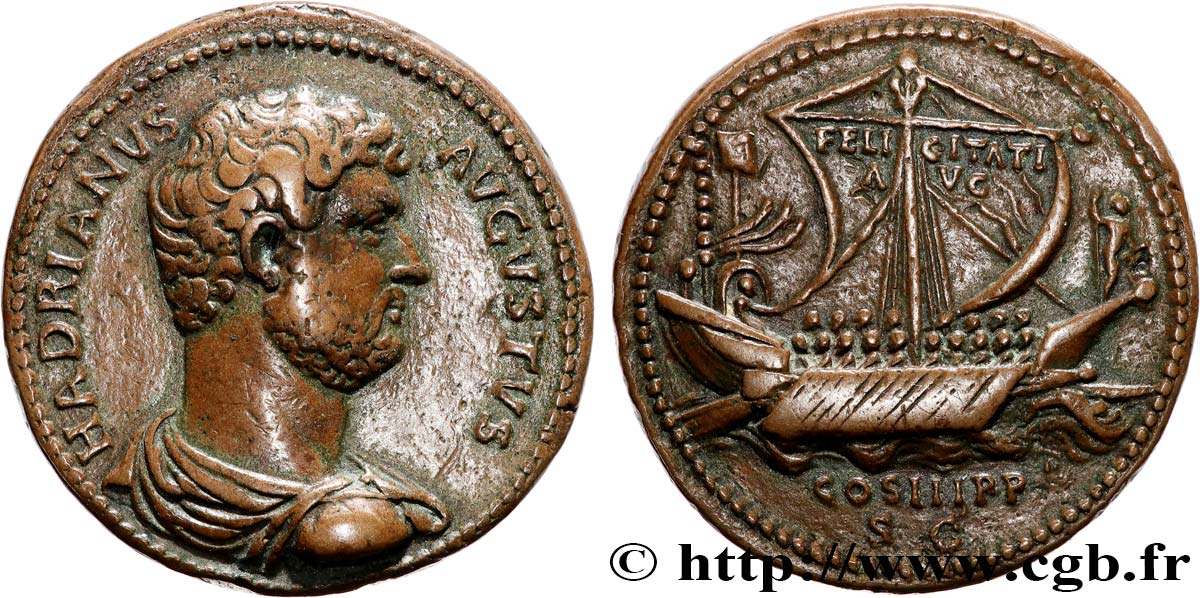
 Berichten über einen Fehler
Berichten über einen Fehler Die Seite drucken
Die Seite drucken Teilen meiner Auswahl
Teilen meiner Auswahl Stellen Sie eine Frage
Stellen Sie eine Frage Einlieferung/Verkauf
Einlieferung/Verkauf
 Details
Details
